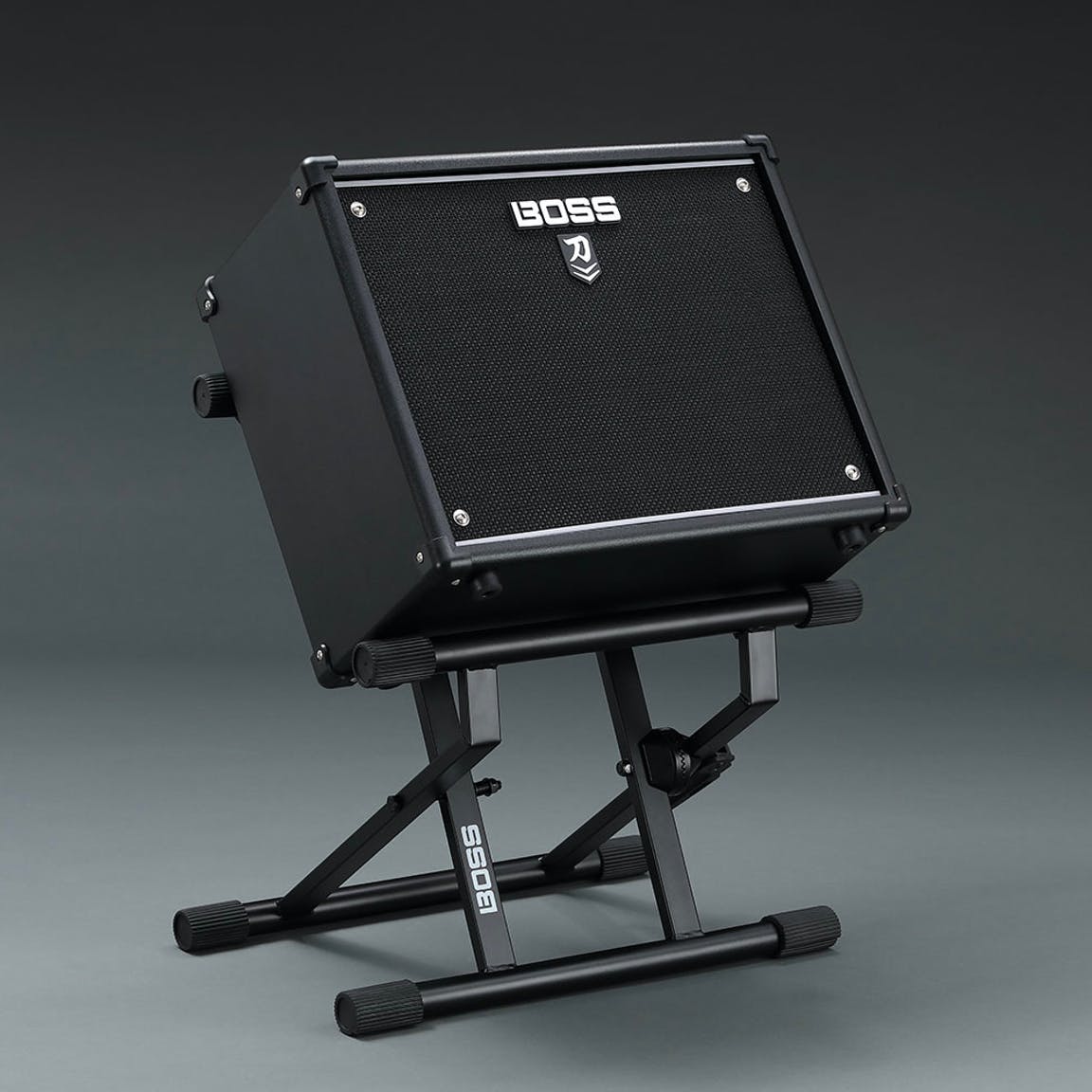Whether you’re playing at home or gigging, an amp stand might be what your rig is missing. If you’re looking to improve your sound on stage or stop your neighbours from hearing it at home, amp stands provide both tonal and practical benefits.
At Home
Playing guitar at home can be frustrating – trying to get that perfect tone at volumes that won’t have your neighbours banging on the walls. Amp stands can go a long way to helping this.
A quick physics lesson: You might have noticed that if you sit or stand directly in front of your amp while you play, your tone is clear and bright, but as soon as you move off-axis (away from the direction of the speakers), it gets dark and muddy. This is because treble frequencies are the most directional but least powerful, while bass frequencies carry further but are less directional, which is why when a car drives past outside with the music blaring, all your hear is bass.
Keeping The Volume Down
Perhaps acoustic treatment will dampen the noise and keep the neighbours happy? Not really. As we learnt in our physics lesson, bass frequencies are the strongest, and although acoustic treatment can absorb treble, it won’t block out the bass. This is where amp stands come in! With your amp on the floor, it is absorbing a lot of bass vibrations directly from the amp and transferring them through walls and ceilings. By raising the amp, you take away the chance for the floor to project your bass throughout the building.
Now that the bass is under control, you will hear the full range of your amp more clearly, so you won’t have to compensate by cranking the volume. Bonus – with an adjustable amp stand you can raise and tilt the speakers towards your ears rather than your shins, giving you more “perceived volume” (the loudness you hear vs the actual loudness) and a clearer tone, meaning you can play with less volume in the room. Result: happy neighbours.
Recording At Home
Aside from annoying the neighbours, one of the biggest challenges with playing at home is getting a good recorded tone without “room noise”. If you’ve ever tried recording in a small room, you’ll have experienced reverberations from the walls bleeding into your mic, leaving a muddy mess. Sure, you could record directly into your interface, but let’s face it; it’s just not the same. By angling your amp on a stand, the sound is able to project into the room and disperse more evenly. Farewell, nasty reflections!

At a Gig
Okay, so I get why I should use an amp stand at home but do I really need to be hauling extra gear to my gigs? Yes! Yes you do. Firstly, amp stands are lightweight and portable. Secondly, if you think they’ll improve your tone at home, they make an even bigger difference at gigs!
If you’ve done more than a couple of gigs then you’ll have undoubtedly experienced dialling in that perfect tone in band practice, turning up to the gig, sound checking, and suddenly you’re completely out of the mix. This is because the stage is eating up your sound. Most live venues have a wooden stage that’s hollow underneath, so when you place your speaker cab on that stage it’ll amplify those bass frequencies and all of a sudden your sound has lost all of its bite and is being gobbled up by the bass and drums. So you compensate by cranking the volume and treble, and it’s at this point the front-of-house engineer yells at you to turn it down (and they’re right). Although you can’t hear yourself, the poor audience member who’s standing right at the eye line of the speaker is going to get their eardrums blown out by the piercing treble.

Cut Through The Mix
The solution? Get the amp up on a stand, minimising contact with the stage. Suddenly all of your midrange and clarity will come back, you can point the speaker towards your head and you’ll hear every single note you play, and so will your audience. And because you’ve taken the stage out of the equation you’ll get a more consistent sound venue to venue, (and trust me – your bandmates will thank you for it).
If you’re playing a small venue with minimal PA facilities, it’s crucial that your amp projects your sound evenly into the room, so no matter where the audience is standing, you still sound good. By tilting your amp up your sound will be less directional and it will fill the room, so you can blow the roof off figuratively, not literally!







Responses & Questions